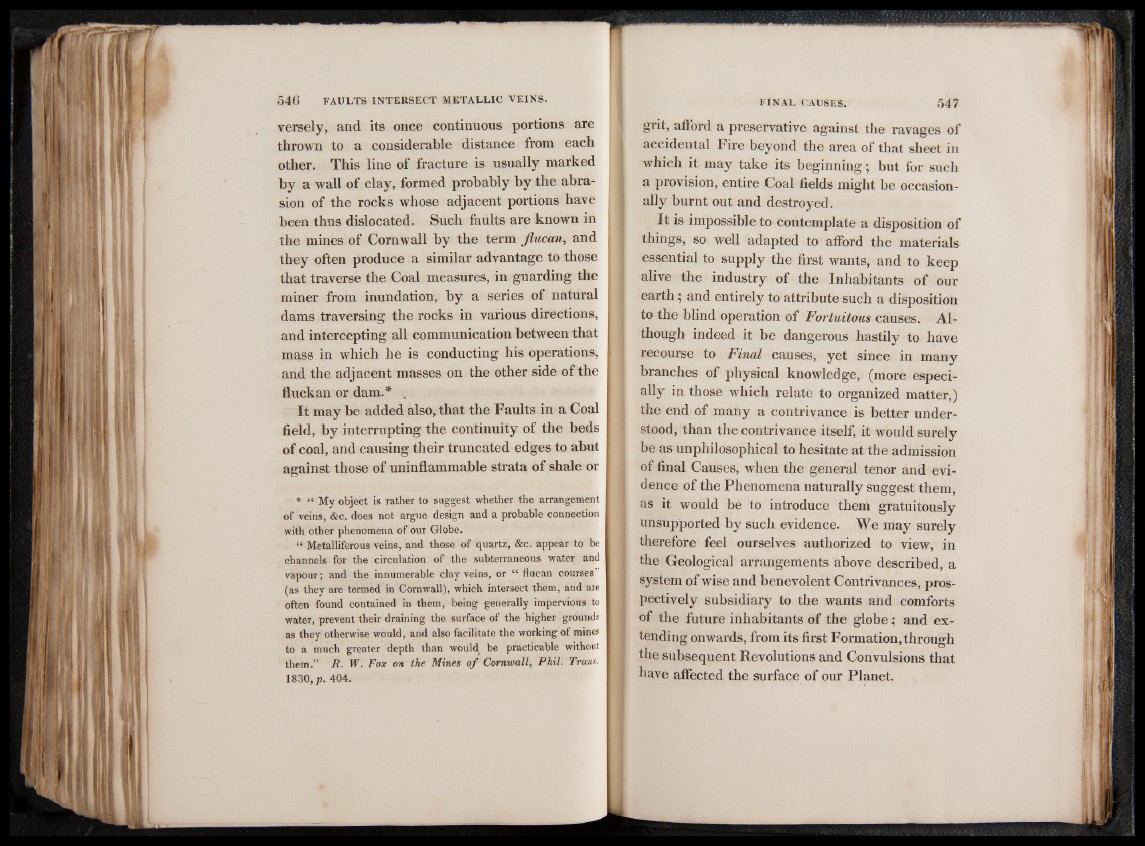
versely, and its once continuous portions are
thrown to a considerable distance from each
other. This line of fracture is usually marked
by a wall of clay, formed probably by the abrasion
of the rocks whose adjacent portions have
been thus dislocated. Such faults are known in
the mines of Cornwall by the term Jlucan, and
they often produce a similar advantage to those
that traverse the Coal measures, in guarding the
miner from inundation, by a series of natural
dams traversing the rocks in various directions,
and intercepting all communication between that
mass in which he is conducting his operations,
and the adjacent masses on the other side of the
fluckan or dam.* .
It may be added also, that the Faults in a Coal
field, by interrupting the continuity of the beds
of coal, and causing their truncated edges to abut
against those of uninflammable strata of shale or
* “ My object is rather to suggest whether the arrangement
of veins, &c. does not argue design and a probable connection
with other phenomena of our Globe.
“ Metalliferous veins, and those of quartz, &c. appear to be
channels for the circulation o f the subterraneous water and
vapour; and the innumerable clay veins, or “ fluean courses ’
(as they are termed in Cornwall), which intersect them, and are
often found contained in them, being generally impervious to
water, prevent their draining the surface of the higher grounds
as they otherwise would, and also facilitate the working of mines
to a much greater depth than would be practicable without
them.” R. W. Fox on the Mines o f Cornwall, Phil. Trans.
grit, afford a preservative against the ravages of
accidental Fire beyond the area of that sheet in
which it may take its beginning; but for such
a provision, entire Coal fields might be occasionally
burnt out and destroyed.
It is impossible to contemplate a disposition of
things, so well adapted to afford the materials
essential to supply the first wants, and to keep
alive the industry of the Inhabitants of our
earth; and entirely to attribute such a disposition
to the blind operation of Fortuitous causes. Although
indeed it be dangerous hastily to have
recourse to Final causes, yet since in many
branches of physical knowledge, (more especially
in those which relate to organized matter,)
the end of many a contrivance is better understood,
than the contrivance itself, it would surely
be as unphilosophical to hesitate at the admission
of final Causes, when the general tenor and evidence
of the Phenomena naturally suggest them,
as it would be to introduce them gratuitously
unsupported by such evidence. We may surely
therefore feel ourselves authorized to view, in
the Geological arrangements above described, a
system of wise and benevolent Contrivances, prospectively
subsidiary to the wants and comforts
of the future inhabitants of the globe; and extending
onwards, from its first Formation,through
the subsequent Revolutions and Convulsions that
have affected the surface of our Planet.